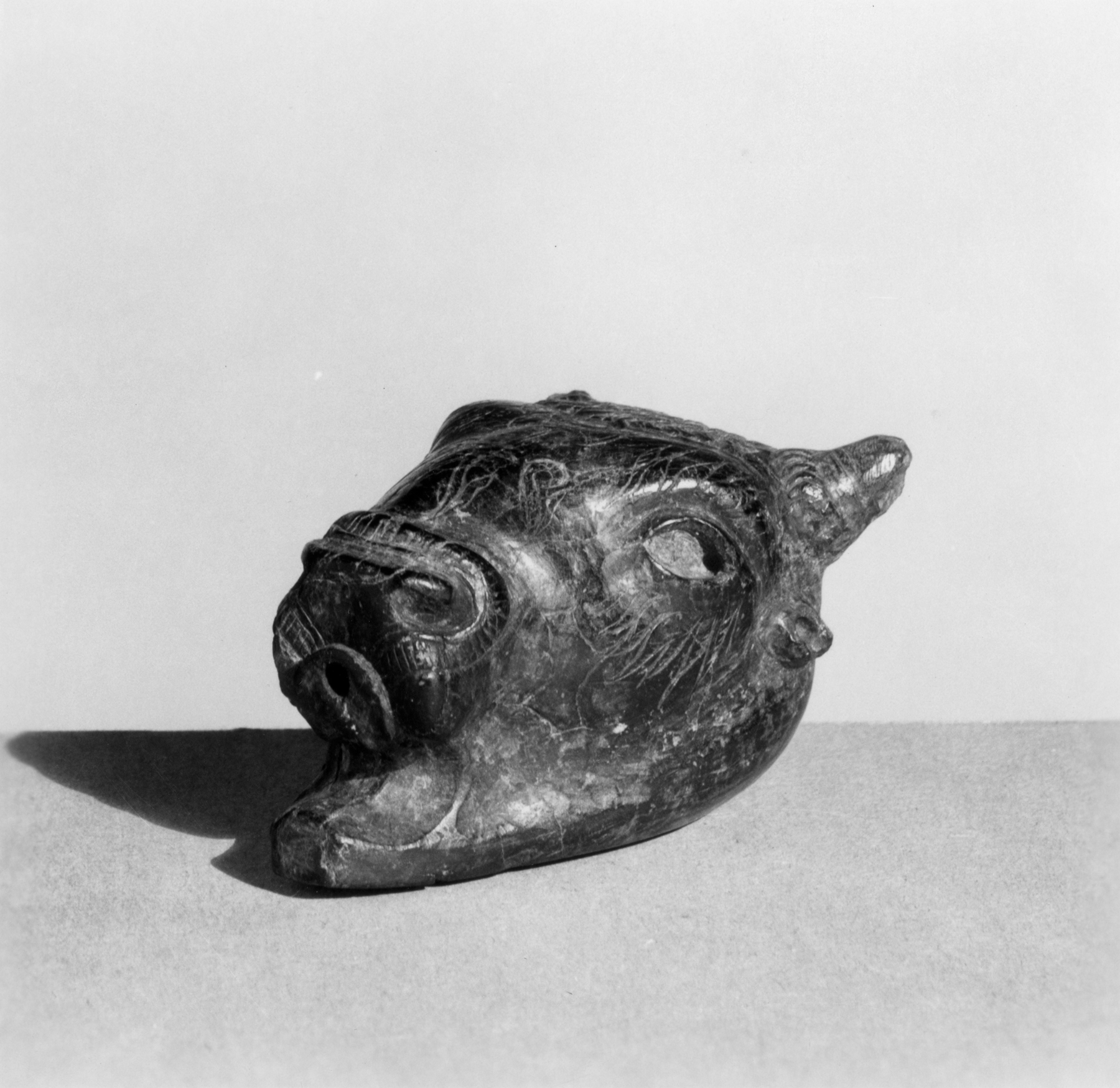Rhyton in the Form of a Bull's Head
(Ancient Greece )
This small steatite vessel is carved in the form of a bull’s head, with modeled and incised details, including a double axe on the brow. Other materials would have been used to create the horns and the inlay of the deeply carved eyes. The back of the neck has been carved smooth and is cracked; there is a chip missing from the proper right side of the muzzle. Liquid would be poured into the circular opening at the top of the head and then would have dripped out of the small hole at the muzzle, perhaps indicating that this object was intended to be used to make ritual libations. Other examples of stone bull’s head vessels are hollowed out, in addition to the hole at the top of the head and mouth, but this piece is solid, with the exception of the conical section drilled out from the top to the muzzle. The size, method of manufacture, and condition of this piece raise questions about its authenticity.
Provenance
Provenance (from the French provenir, 'to come from/forth') is the chronology of the ownership, custody, or location of a historical object. Learn more about provenance at the Walters.
Leon Gruel, Paris, [date and mode of acquisition unknown]; Henry Walters, Baltimore, 1929 [mode of acquisition unknown]; Walters Art Museum, 1931, by bequest.
Exhibitions
| 2018 | Odyssey: Jack Whitten Sculpture, 1963 - 2016. Baltimore Museum of Art, Baltimore; The Met Breuer, New York. |
Geographies
Greece, Crete (Place of Origin)
Measurements
H: 2 13/16 × W: 1 3/4 × D: 1 5/8 in. (7.2 × 4.5 × 4.1 cm)
Credit Line
Acquired by Henry Walters, 1929
Location in Museum
Not on view
Accession Number
In libraries, galleries, museums, and archives, an accession number is a unique identifier assigned to each object in the collection.
In libraries, galleries, museums, and archives, an accession number is a unique identifier assigned to each object in the collection.
23.194


